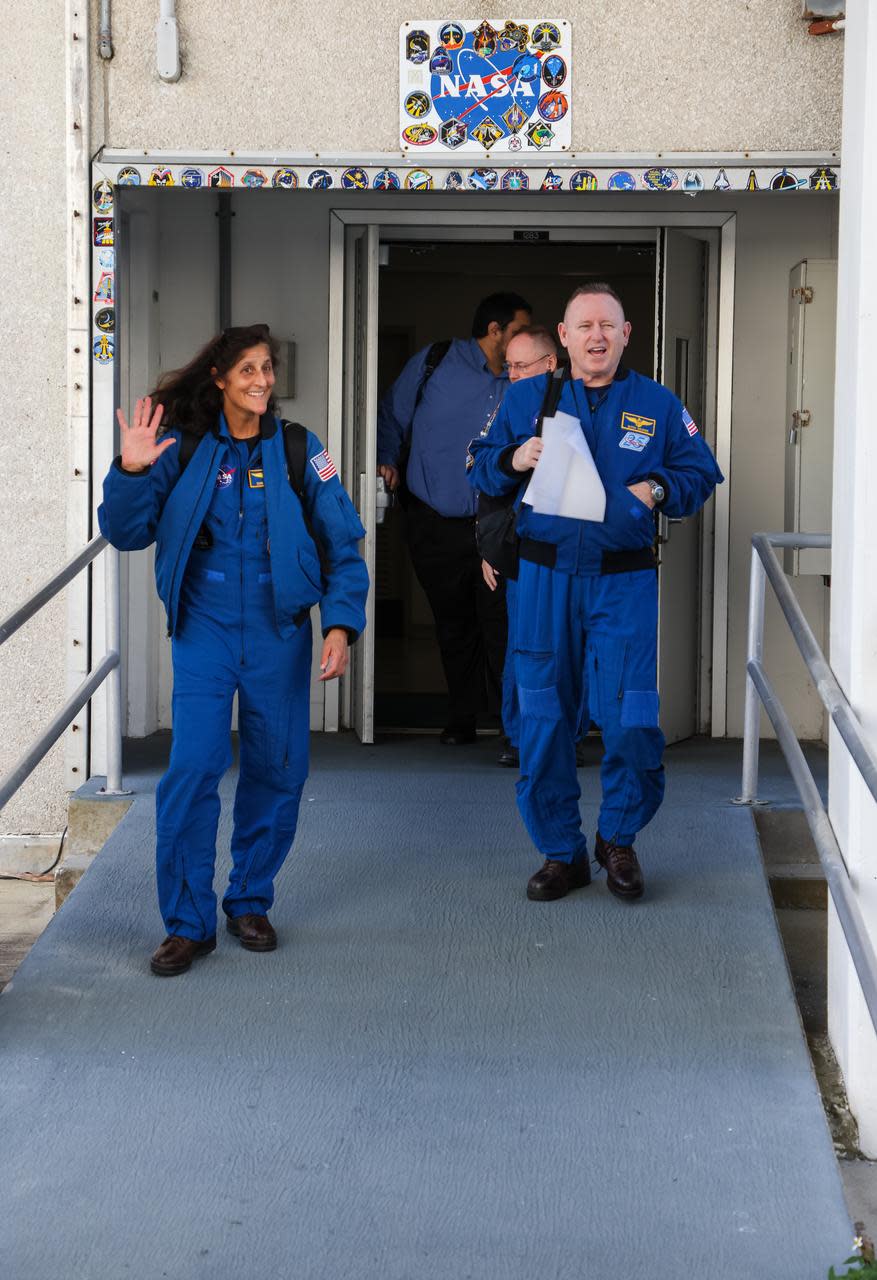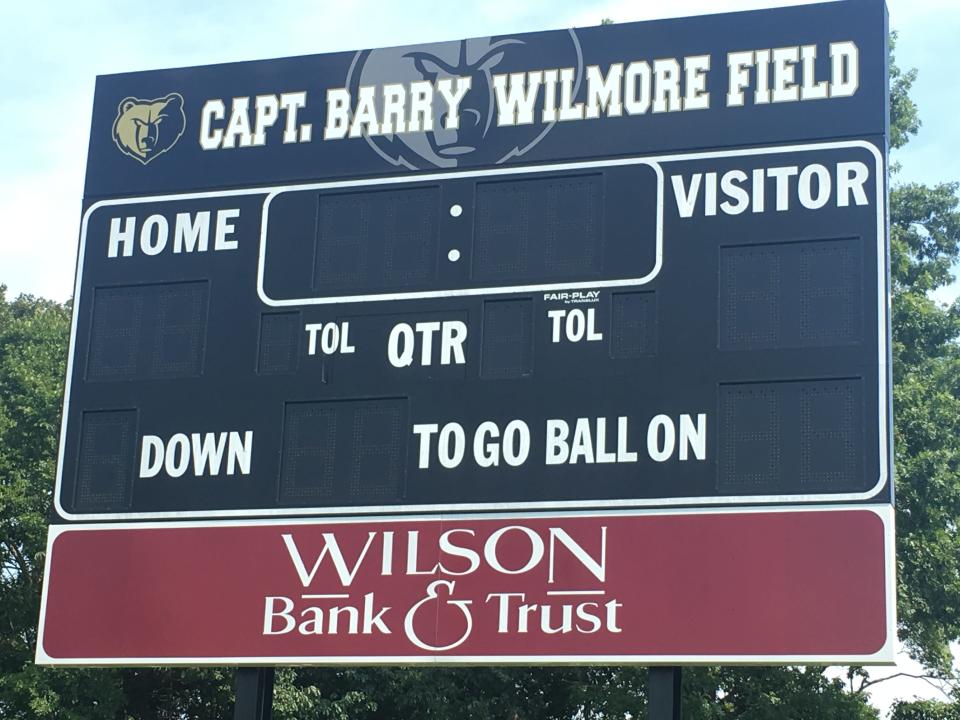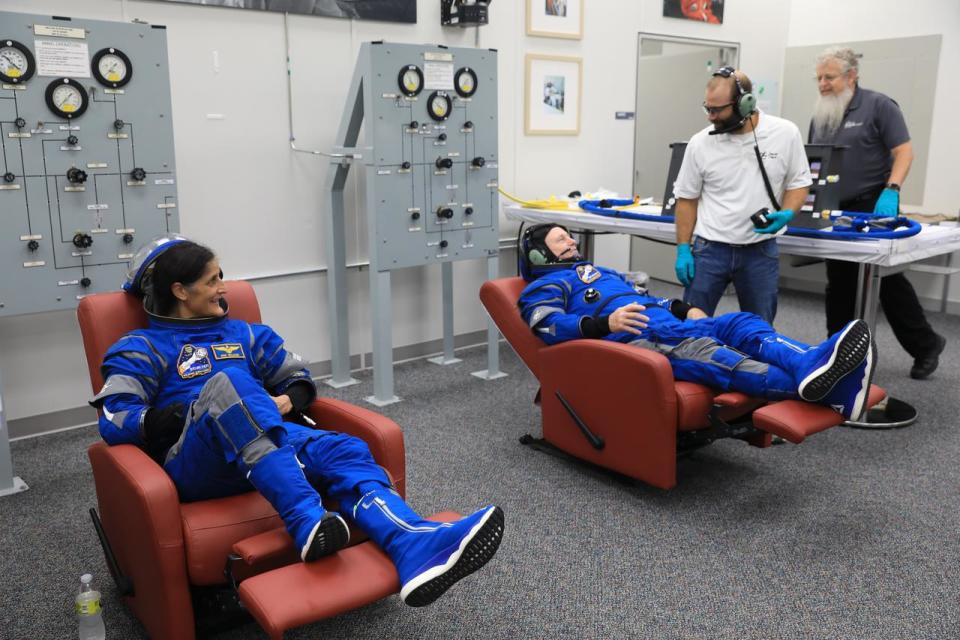Mt. Juliet High graduate and astronaut Barry Wilmore on upcoming NASA Starliner launch
- Oops!Something went wrong.Please try again later.
Mt. Juliet High School and Tennessee Tech University graduate Barry “Butch” Wilmore is scheduled to go back into space as commander of the first crewed Boeing Starliner spacecraft.
Wilmore will be traveling to the International Space Station on board the Starliner with fellow astronaut Suni Williams. The flight test will help NASA determine if the Starliner system is ready to fly regular crew rotation missions to space station.
The Starliner has completed two test flights without astronauts that include Orbital Flight Test 2 in 2022. The launch with Wilmore and Williams is now estimated for 9:34 p.m., Monday, according to NASA.
Why NASA wants Starliner

The mission will test the automated and manual processes and capabilities of the Starliner, which NASA eventually plans to use for rotational missions with astronauts to the International Space Station.
SpaceX is also under contract with NASA's Commercial Crew Program and has performed crew rotation missions to the space station since 2019, using the Dragon capsule.
The NASA program contracted with Boeing to develop a second spacecraft system capable of travel to the ISS, in part to have another option if one isn’t operational.
The goal when both spacecraft are certified is to rotate them regularly on space station missions as a cost-effective transportation mode that will also enhance research, according to NASA Commercial Crew Program spokesperson Steven Siceloff.
Safety and flight operations
Wilmore: We have tweaked most every display there is. Including we have tweaked every single procedure there is. We have new procedures we didn’t have at one point based on our testing and the improved capabilities of this spacecraft.
In any mode we may find ourselves in, we have survivable modes.
We don’t expect any failure modes (or) significant failures, but if something were to occur because we’re all humans (and) we can’t build things perfectly … we have several downgrade modes, one of which is manual, another is a backup mode … that we can control this in any type of failure mode."

Williams: We made a more extensive test plan, (we) worked with them to do that on some of these areas where we made some improvements, so I think our input as testers along with the engineers who are working on these projects already were able to influence some of the design to get us to the full capability that we wanted.
Depth of testing and training
Wilmore: Something as basic as the crew suit to seat integration — you’ve actually got to get in the suit, get in the seat and make sure those kinds are correct. And we did that early on. … We found some things that needed to be rectified. And that’s just part of the process. And that’s one of the exciting things about being in the role that we’re in. … You test even those kind of issues, not just all the flying, but also just the basic living and habitating within the capsule is very important.
Being named commander
Wilmore: I’m the one that’s got the title. The first conversation we had after the assignments were made, we sat down and I said ‘Suni, we’re going to do this together. ...’ We’ve known each other a long time and I respect her ability, her capability, insight, all of that. ... I have the title, but we make decisions together. … It’s almost like we’re reading each other’s mind at this point.
Family impact
Wilmore (wife Deanna and daughters Daryn and Logan): Our families have been part of this from the beginning. My wife and I met when I was already in the Navy deploying on aircraft carriers. My daughters were born after we got here. This is all they know. This is life. This is not something ‘Daddy’s going to space again.' Well actually it is like that … it’s just what they know. So as far as preparing them, they’re prepared. We trust in a sovereign God … whatever the plan is we’re ready for it, whatever that might be. They are excited as we are and ready to go as well.
Williams (husband Michael): We wouldn’t be sitting here if we didn’t feel and tell our families that we feel confident in this spacecraft and our capabilities to control it and to be on it.

Manual control in flight operations
Wilmore: Operational crew capabilities is what we call them. OCCs. In that is a fair amount of manual control, manual flying, manual checkout. For instance, let’s say you lose your computer. Your computer has the knowledge of where the sun is, where the stars are, where the satellites are — the tracking satellites that allow us to bounce our communication. So if you lose your computer how do you point your antennae at the satellite? We’re going to test it in this backup kind of mode. We’re not going to go into backup mode, but we’re going to test that capability. … Our solar rays are basically on the back of the spacecraft. How do you point your tail at the sun if you don’t have a computer? We’re going to go through and we’re going to test that.”
So you want to be an astronaut?
Wilmore has accumulated 178 days in space over two missions. Williams has spent a total of 322 days in space over the course of her two missions.
Williams: We have people from all different fields in the astronaut office. We happen to be test pilots, but not everyone in the office is a test pilot. We have scientists, we have engineers, we have mathematicians, we have teachers in the office as well. I think everybody though has a STEM (science, technology, engineering and mathematics) background. So if you are interested in STEM, interested in exploring, interested in being a team member, that’s sort of the job description.
Reach Andy Humbles at ahumbles@tennessean.com or 615-726-5939 and on X, formerly known as Twitter @ AndyHumbles.
This article originally appeared on Nashville Tennessean: Middle Tennessee native and astronaut Barry Wilmore on pending launch

